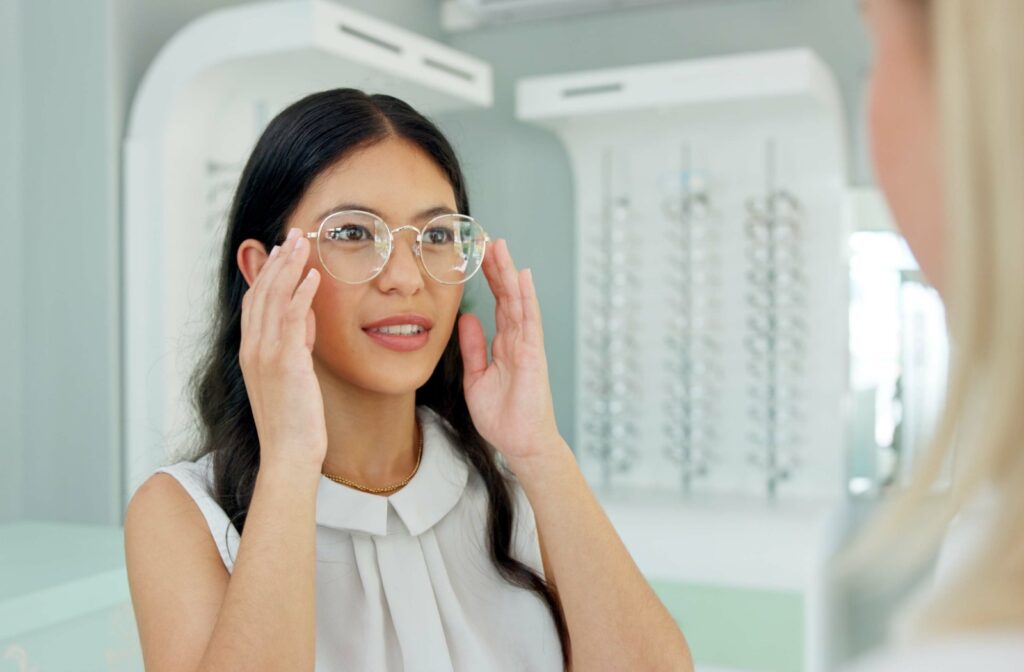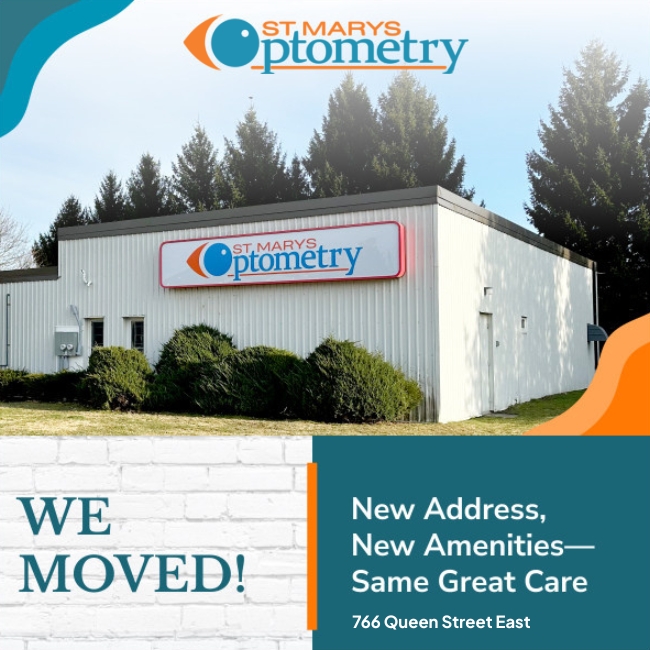If you’ve ever struggled to see things up close or far away, you’ve likely heard the terms myopia and hyperopia. Myopia, or nearsightedness, makes distant objects look blurry, while hyperopia, or farsightedness, makes close-up tasks like reading more difficult.
Both conditions affect how light focuses on the retina, but in different ways. If you’ve been straining to see clearly, booking an eye exam can help determine whether you have myopia or hyperopia and find the right solution to keep your vision sharp.
What’s the Difference Between Myopia & Hyperopia?
To put it simply, the difference between myopia and hyperopia boils down to where your eye focuses light.
- Myopia (nearsightedness) means nearby objects are clear, but faraway objects appear blurry.
- Hyperopia (farsightedness) means distant objects are clear, but nearby objects are hard to focus on.
Both conditions happen because the eye’s shape impacts how light is refracted as it hits the retina.
How Myopia Affects Vision
If you have myopia, your eye focuses light in front of the retina instead of directly on it. This happens because the shape of your eyeball is slightly longer than it should be or your cornea (the clear front surface of your eye) is too curved.
What does this mean? Things up close—your phone screen, your laptop, or that book you’ve been meaning to finish—appear perfectly clear. But objects farther away, like the TV across the room or road signs while driving, may seem blurry and hard to make out.
How Hyperopia Affects Vision
Hyperopia, on the other hand, causes light to focus behind the retina. This happens if your eyeball is shorter than normal or your cornea isn’t curved enough, leading to trouble seeing objects up close.
Ever feel like you have to hold that menu way out at arm’s length to read it? That’s hyperopia at work. You might also find that straining to focus up close gives you headaches or makes your eyes feel tired.
Causes of Myopia & Hyperopia
Both myopia and hyperopia can be influenced by a mix of factors, including:
- Genetics: If your mom, dad, or siblings have one of these conditions, there’s a good chance you might develop it, too.
- Environment: Activities like spending long hours looking at screens or studying up close without taking breaks may contribute to eye strain and the development of vision problems for some people.
It’s worth noting that hyperopia may also be present at birth and improve as a child’s eyes grow, while myopia usually develops during childhood or teenage years, tending to stabilize in early adulthood.
Symptoms of Myopia vs. Hyperopia
Not sure which one you might have? Here are some common symptoms of each condition.
Symptoms of Myopia (Nearsightedness)
- Blurry vision when looking at distant objects
- Difficulty driving, especially at night
- Squinting to see faraway things
Symptoms of Hyperopia (Farsightedness)
- Blurry or hard-to-focus vision when looking at nearby objects
- Headaches or eye strain after reading or using screens
- Feeling like your eyes tire out quickly when doing close-up tasks
How Are Myopia & Hyperopia Diagnosed?
Think you might have one of these conditions? The good news is that diagnosing myopia or hyperopia is simple. During a routine eye exam, your optometrist will check your vision using a variety of tools and tests.
They’ll likely ask you to read an eye chart and use a device called a phoropter or retinoscope to measure how light is focused in your eyes. This helps determine whether you’re better suited to contacts or glasses and what your prescription is.
Treatment Options for Myopia & Hyperopia
Thankfully, there’s no shortage of options to help correct your vision so you can see clearly. Common treatments for myopia and hyperopia include:
- Glasses: A quick, stylish solution to correct your vision, whether you’re a fashionista or just a fan of convenience.
- Contact Lenses: Perfect for those who prefer to ditch the frames and go for a wider field of view.
- Refractive Surgery (like LASIK): A long-term option that reshapes the cornea to improve focus.
Your optometrist can work with you to find the best solution based on your lifestyle and preferences.
Preventing Vision Changes: Eye Care Tips
While you can’t always prevent myopia or hyperopia, you can take steps to keep your eyes healthy and comfortable. Try these tips for better eye health:
- Take breaks from close-up tasks every 20 minutes and look at something 20 feet away for 20 seconds.
- Wear sunglasses to protect your eyes from harmful UV rays.
- Keep up with regular eye exams—your optometrist can catch changes in your vision early.
- Maintain proper lighting when reading or working, and adjust your screen brightness to reduce glare.
See an Optometrist for Vision Concerns
If you’re struggling with blurry vision, headaches, or eye strain, book an appointment at St. Marys Optometry. We’ll help pinpoint the cause of your symptoms and find a solution that works for you.
We’re here to make your vision clear and your experience comfortable. Whether you need glasses, tips for eye health, or just a friendly chat about your options, we’ve got you covered!





